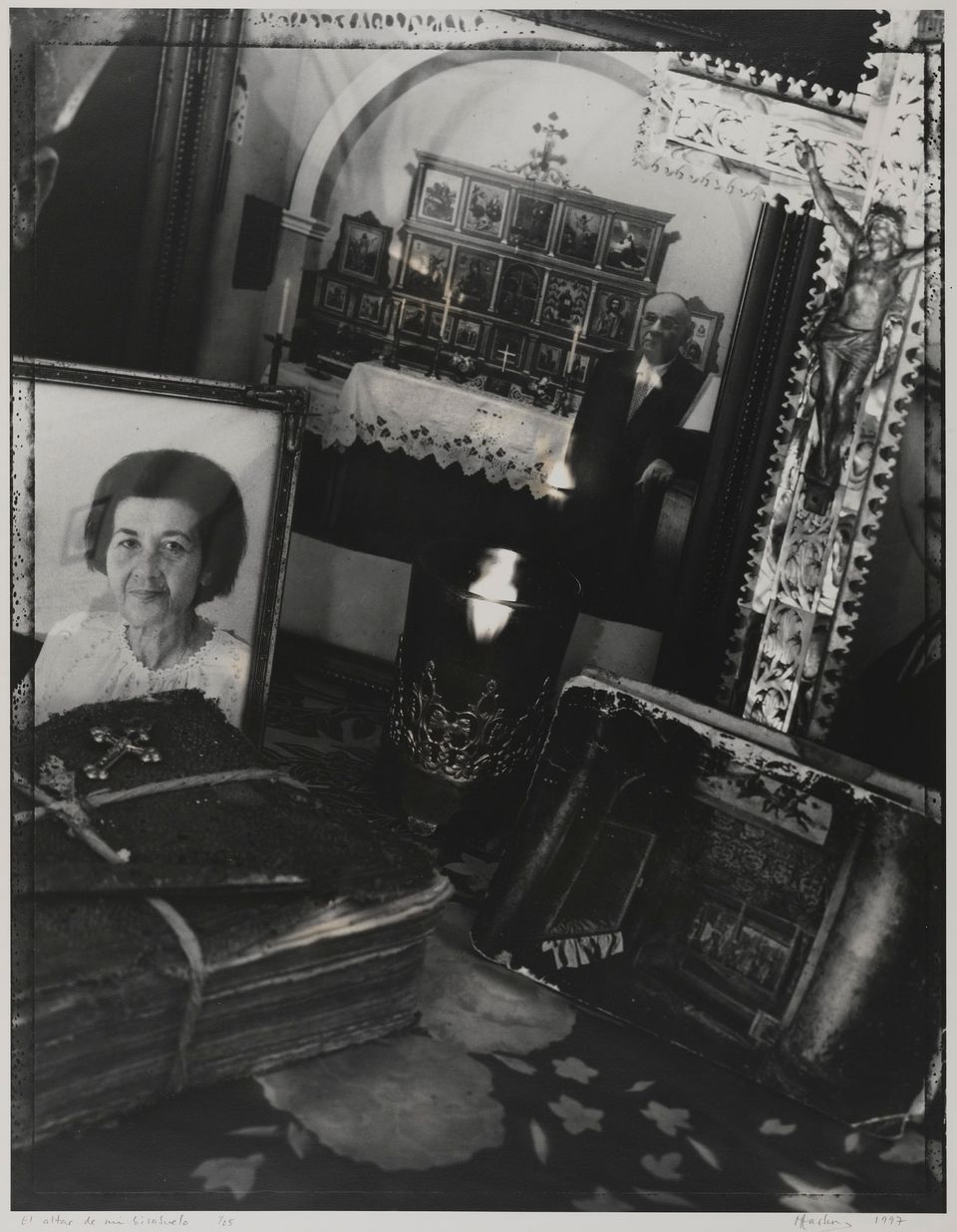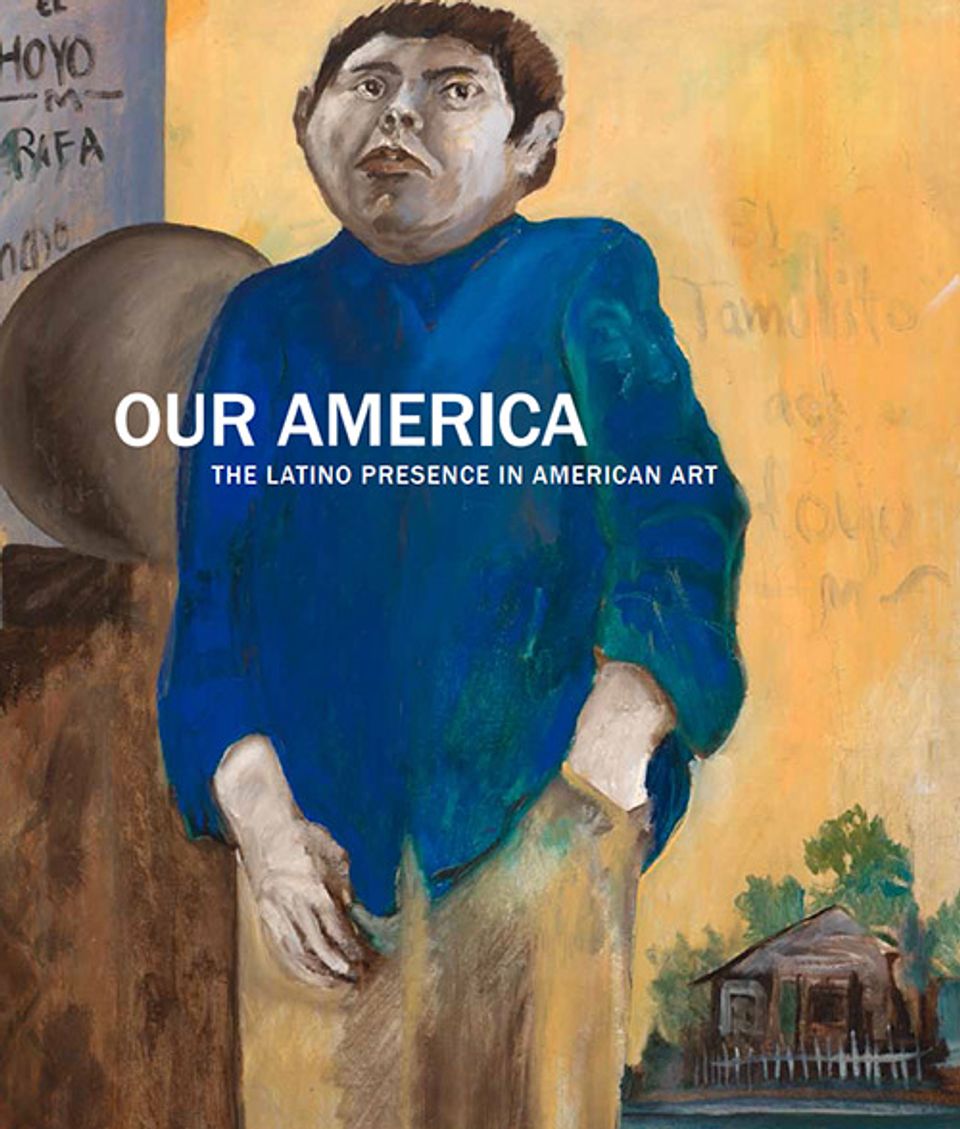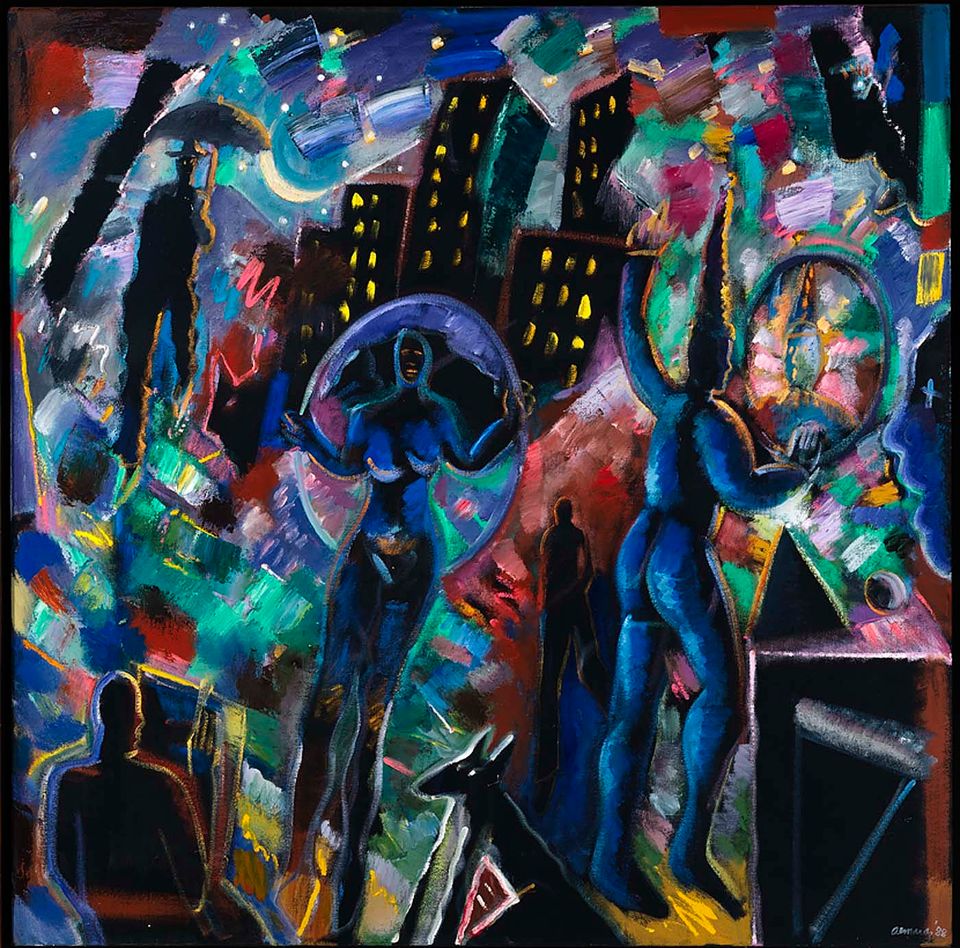Artwork Details
- Title
- El altar de mi bisabuelo/My Great Grandfather’s Altar, from the series Santos y sombras/Saints and Shadows
- Artist
- Date
- 1997
- Location
- Not on view
- Dimensions
- image: 17 5⁄8 x 13 3⁄4 in. (44.7 x 35 cm) sheet: 19 7⁄8 x 15 7⁄8 in. (50.5 x 40.3 cm)
- Copyright
- © 1997, Muriel Hasbun
- Credit Line
- Gift of Mr. and Mrs. Charles H. Moore
- Mediums Description
- gelatin silver print
- Classifications
- Subjects
- Still life — art object — photograph
- Object — written matter — book
- Object — other — candlestick
- Object — other — crucifix
- Object Number
- 2005.3.5
Artwork Description
These works recover shards of a past lost to forced migration, assimilation, and genocide. Muriel Hasbun was born in El Salvador to a Salvadoran Palestinian Christian father and a French Polish Jewish mother, who as a child survived the Holocaust. Hasbun fled El Salvador at the start of the country's civil war in 1979, continuing her family's history of exodus and fragmentation. She addresses this history through a practice that combines archival research with photography.
The X post facto (équis anónimo) series is based on an archive of x-rays discovered in her father's office. As a dentist, he was often asked to use his archive to identify bodies of the victims of civil war--sometimes his own family. The layered images in the series Santos y sombras/Saints and Shadows allude to her grandfather's Greek Orthodox faith and her own Catholic upbringing. Hasbun arranged visual fragments in an altar-like manner, with a kaleidoscopic repetition of religious motifs: crosses, votive candles, and prayer books.
Hasbun capta fotos dentro de fotos y superpone múltiples exposiciones en una sola copia para examinar los sucesos que obligaron a su familia a migrar. Las fotografías colocadas a manera de altar conmemoran a sus antepasados. Entre ellas, la foto central muestra a su bisabuelo frente al retablo ortodoxo griego que construyó en El Salvador después de huir de Palestina. La otra fotografía aquí exhibida es un retrato etéreo de Ester, su tía judía, quien sobrevivió la ocupación nazi en Francia.
Nuestra América: la presencia latina en el arte estadounidense, 2013
Related Books
Exhibitions
Related Posts


















